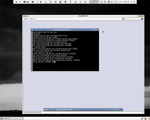This Ubuntu-Based Linux OS Looks Shockingly Similar To Windows 10




If imitation is the sincerest form of flattery, I can confidently say that an Ubuntu-based Linux OS called “WindowsFx” really admires the appearance of Microsoft’s Windows 10. In fact, this distribution goes to such painstakingly detailed lengths to emulate the look and feel of Windows 10, I’m surprised Microsoft hasn’t called in the army of lawyers to shut it down. But is WindowsFx a comfortable gateway into Linux for Windows users, or merely an Ubuntu clone with a clever Windows skin?
-

- Login or register to post comments
 Printer-friendly version
Printer-friendly version- 4875 reads
 PDF version
PDF version
More in Tux Machines
- Highlights
- Front Page
- Latest Headlines
- Archive
- Recent comments
- All-Time Popular Stories
- Hot Topics
- New Members
digiKam 7.7.0 is released
After three months of active maintenance and another bug triage, the digiKam team is proud to present version 7.7.0 of its open source digital photo manager. See below the list of most important features coming with this release.
|
Dilution and Misuse of the "Linux" Brand
|
Samsung, Red Hat to Work on Linux Drivers for Future Tech
The metaverse is expected to uproot system design as we know it, and Samsung is one of many hardware vendors re-imagining data center infrastructure in preparation for a parallel 3D world.
Samsung is working on new memory technologies that provide faster bandwidth inside hardware for data to travel between CPUs, storage and other computing resources. The company also announced it was partnering with Red Hat to ensure these technologies have Linux compatibility.
|
today's howtos
|









.svg_.png)
 Content (where original) is available under CC-BY-SA, copyrighted by original author/s.
Content (where original) is available under CC-BY-SA, copyrighted by original author/s.

Linuxfx: an Ubuntu-based operating system that looks like Win10
Linuxfx: an Ubuntu-based operating system that looks like Windows 10